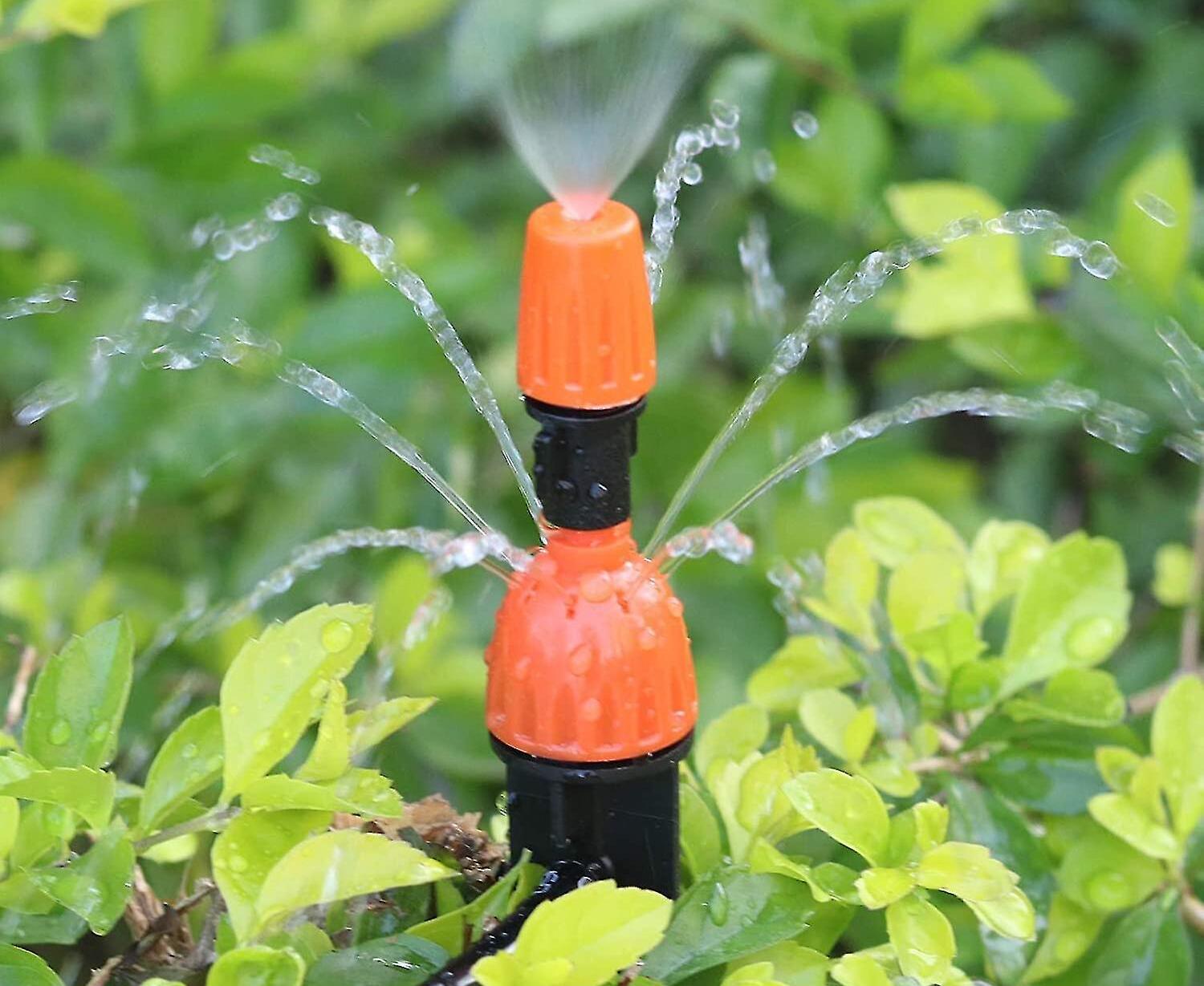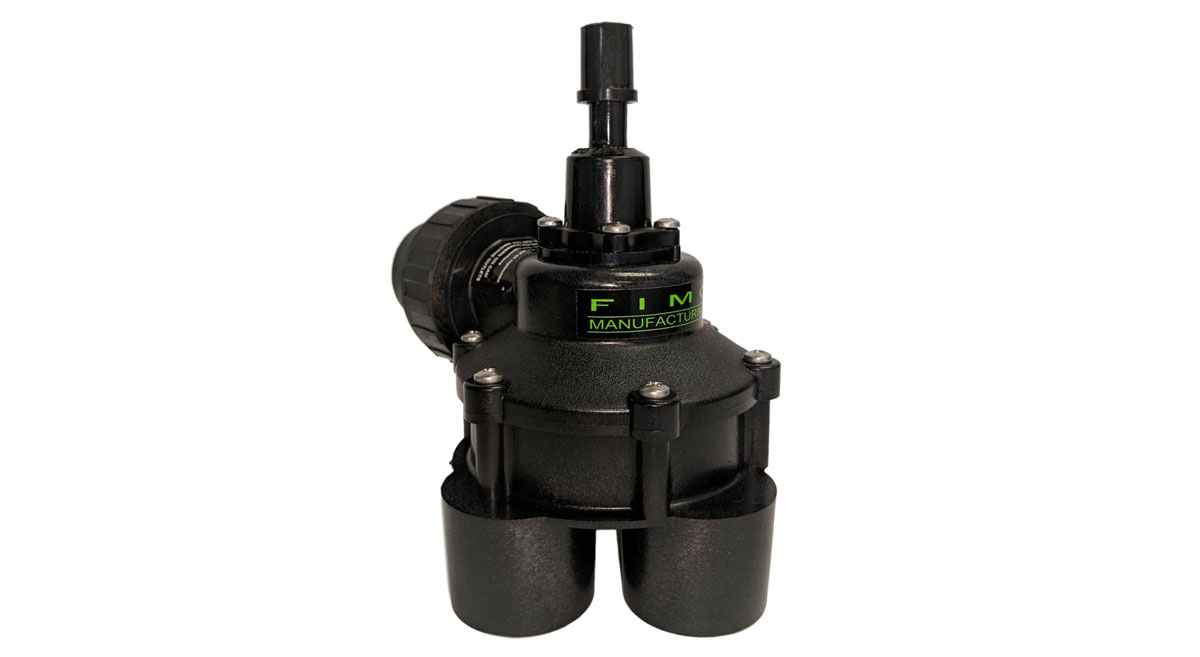Home>Gardening News and Trends>Latest News>When Does Kennewick Irrigation Turn On 2022


Latest News
When Does Kennewick Irrigation Turn On 2022
Published: November 20, 2023
Stay up to date with the latest news on when Kennewick Irrigation will turn on in 2022. Stay informed and plan your irrigation schedule accordingly.
(Many of the links in this article redirect to a specific reviewed product. Your purchase of these products through affiliate links helps to generate commission for Chicagolandgardening.com, at no extra cost. Learn more)
Table of Contents
- Introduction
- Overview of the Kennewick Irrigation District
- Factors Influencing the Timing of Irrigation Turn On
- Historical Patterns and Trends of Irrigation Turn On
- Projected Start Date for Kennewick Irrigation in 2022
- Impact of Weather Conditions on Irrigation Turn On
- Importance of Early Irrigation for Crop Success
- Preparations and Precautions for the Irrigation Season
- Conclusion
Introduction
Welcome to the bustling city of Kennewick, where agricultural activities play a vital role in the local economy. As we delve into the intricacies of Kennewick’s irrigation system, it’s important to understand the significance of irrigation in sustaining the region’s agricultural productivity. The timing of irrigation turn on is crucial for farmers and growers, as it determines when they can begin supplying water to their crops.
The Kennewick Irrigation District (KID) is responsible for managing and distributing water to irrigate the vast agricultural lands in the area. Every year, farmers eagerly await the irrigation season, as it marks the beginning of optimal growing conditions for their crops. However, the exact start date of irrigation turn on can vary from year to year due to various factors.
In this article, we will explore the factors that influence the timing of irrigation turn on in Kennewick and delve into historical patterns and trends related to this crucial event. We will also examine the projected start date for Kennewick Irrigation in 2022, considering the impact of weather conditions on this decision. Furthermore, we will shed light on the importance of early irrigation for crop success and provide some insights on preparations and precautions for the upcoming irrigation season.
Join us as we navigate the world of Kennewick’s irrigation system and uncover the intricacies of when the water will start flowing through the canals, nourishing the fields and facilitating the growth of the region’s agricultural abundance.
Overview of the Kennewick Irrigation District
The Kennewick Irrigation District (KID) is a crucial organization in the agricultural landscape of Kennewick. Established in the early 1900s, the district spans over 59,000 acres of irrigable land, serving a diverse range of crops, including fruits, vegetables, and grains.
KID is responsible for managing the water resources and distribution network that supports the region’s agricultural activities. The district operates a complex system of canals, pipelines, and pumps to transport water from the Columbia River and deliver it to the farmers’ fields.
The district’s primary goal is to ensure an equitable and efficient allocation of water resources among its members. To achieve this, KID has implemented a system of water rights, which establishes the priority and entitlements for each member to access water for irrigation purposes.
KID is governed by a board of directors consisting of local farmers and irrigators who are elected by district members. The board oversees the district’s operations, sets water delivery schedules, and makes important decisions regarding the management of water resources.
In addition to water distribution, KID also plays a vital role in providing support and educational resources to its members. The district conducts workshops, seminars, and training programs to help farmers optimize their irrigation practices, conserve water, and adopt sustainable farming techniques. KID also offers financial assistance and incentives for farmers to implement water-saving technologies and infrastructure upgrades.
Overall, the Kennewick Irrigation District serves as a lifeline for the agricultural community, ensuring a reliable water supply that is essential for the success and prosperity of the region’s farmers and growers.
Factors Influencing the Timing of Irrigation Turn On
Several factors come into play when determining the timing of irrigation turn on in Kennewick. The decision is not taken lightly, as it directly impacts the growth and yield of crops throughout the entire season. Let’s explore some of the key factors that influence this crucial decision.
- Water Availability: The availability of water resources, particularly from the Columbia River, plays a significant role in determining when irrigation can commence. The district closely monitors the water levels and stream flows to ensure there is sufficient supply to meet the demands of irrigators.
- Snowpack and Runoff: The amount of snowpack in the surrounding mountains and the subsequent runoff into the rivers is another important factor. A healthy snowpack and gradual snowmelt can contribute to higher water levels in the rivers, allowing for an earlier start to irrigation season.
- Soil Moisture: The moisture content in the soil is crucial for determining when irrigation should begin. If the soil retains sufficient moisture from winter precipitation, it may delay the need for irrigation. Conversely, if the soil is dry, an early start to irrigation might be necessary to avoid stress on the crops.
- Crop Needs: The stage of crop development and the water requirements of different crops also influence the timing of irrigation turn on. Some crops have higher water demands during specific growth stages, and delaying irrigation could negatively impact their development and yield.
- Weather Forecasts: Monitoring weather forecasts is crucial for making informed decisions about irrigation turn on. If a period of hot and dry weather is forecasted, it may prompt an earlier start to irrigation to ensure the crops receive adequate water.
It is important for the Kennewick Irrigation District to carefully analyze and evaluate these factors before determining the optimal timing for irrigation turn on. By considering the availability of water resources, snowpack, soil moisture, crop needs, and weather forecasts, the district aims to strike a balance between conserving water and providing optimal growing conditions for the agricultural community.
Historical Patterns and Trends of Irrigation Turn On
Over the years, Kennewick has witnessed certain historical patterns and trends when it comes to the timing of irrigation turn on. Examining these patterns can provide valuable insights into the factors that influence the decision and give us a glimpse into what to expect in the upcoming irrigation season.
Historically, the irrigation turn on in Kennewick has varied from year to year, depending on the prevailing weather conditions and water availability. However, there are some general trends that can be observed.
Typically, the irrigation season in Kennewick begins in late April or early May. This timeframe aligns with the gradual melting of snowpack in the surrounding mountains and the increase in water flows in the rivers. The district closely monitors these factors to determine when it is feasible to initiate irrigation.
In recent years, there has been a shift in the patterns of irrigation turn on, with some seasons experiencing earlier starts. This can be attributed to various factors, including changes in climate patterns and advancements in irrigation technologies.
Advancements in irrigation technology, such as drip irrigation and precision irrigation systems, have allowed for more efficient use of water. This, in turn, has enabled farmers to start irrigation sooner, as these systems require less water and can deliver it directly to the plant’s root zone.
Climate change has also played a role in influencing irrigation patterns. Rising temperatures and shifts in precipitation patterns have led to earlier snow melts and drier soil conditions, prompting the need for earlier irrigation to sustain crop growth.
Additionally, the historical data reveals that the duration of the irrigation season has been extending in some years. This can be attributed to advanced water management practices, improved infrastructure, and increased water storage capacity, allowing for enhanced water availability throughout the season.
It is important to note that while historical patterns and trends can provide guidance, they are not definitive indicators of the exact timing for irrigation turn on. Each year poses unique challenges and considerations that need to be carefully evaluated by the Kennewick Irrigation District in order to make informed decisions about irrigation commencement.
By analyzing historical data and staying abreast of the latest technological advancements and climate patterns, the district can adapt to changing circumstances and ensure the efficient and sustainable use of water resources for the benefit of the local agricultural community.
Projected Start Date for Kennewick Irrigation in 2022
While the exact start date for the Kennewick Irrigation District (KID) in 2022 cannot be determined with absolute certainty, we can make an educated projection based on factors such as historical data and current conditions. It is important to note that this projection is subject to change as it depends on various external factors that may affect water availability and climatic conditions.
Based on historical patterns and trends, the irrigation season in Kennewick typically begins in late April or early May. This timing aligns with the gradual snow melt and increased water flows in the rivers, which are necessary to meet the water requirements of the agricultural lands.
In 2022, the projected start date for Kennewick irrigation will likely follow a similar timeframe. However, it is important to consider the specific conditions leading up to the irrigation season. The district will closely monitor factors such as the snowpack in the mountains, water availability in the rivers, soil moisture levels, and weather forecasts to determine the optimal timing for irrigation turn on.
It is worth noting that deviations from historical patterns can occur due to various factors, including changes in climate patterns and advancements in irrigation technology. Climate change and its impact on precipitation patterns can influence when the snowpack melts and the overall availability of water resources.
Advancements in irrigation technology and improved infrastructure can also play a role in determining the start date of irrigation. If farmers have adopted more efficient irrigation systems, such as drip irrigation or precision irrigation, they may be able to commence irrigation earlier without compromising water management practices.
As the 2022 irrigation season approaches, the Kennewick Irrigation District will closely monitor all relevant factors to make an informed decision on the start date. The district will consider the needs of the crops, water availability, soil moisture levels, and climate projections to ensure a timely and efficient start to the irrigation season.
Ultimately, the projected start date for Kennewick irrigation in 2022 will be based on a comprehensive analysis of historical data, current conditions, and careful evaluation of all relevant factors. Farmers and growers in the area are eagerly anticipating the start of the irrigation season and are prepared to utilize the available water resources to nurture their crops and ensure a successful harvest.
Impact of Weather Conditions on Irrigation Turn On
Weather conditions play a significant role in determining the timing of irrigation turn on in Kennewick. Various weather factors can influence the decision-making process of the Kennewick Irrigation District (KID) and farmers in the region. Let’s explore the impact of weather conditions on irrigation turn on.
One of the primary weather factors that affect irrigation turn on is precipitation. Sufficient rainfall during the winter and early spring can contribute to healthy soil moisture levels, reducing the immediate need for irrigation. Conversely, if there has been a lack of precipitation, the soil may become dry, prompting the district to initiate irrigation earlier to provide the necessary water for crop growth.
Temperature also plays an essential role in determining the irrigation turn on. Warmer temperatures accelerate the evaporation process, increasing the water demand of crops. If a period of hot and dry weather is forecasted, the district may decide to start irrigation earlier to prevent water stress in the plants and support their growth.
Additionally, wind patterns can impact the irrigation turn on decision. Strong winds can increase evaporation rates and cause soil moisture to deplete at a faster pace. This may necessitate an earlier start to irrigation in order to replenish the water lost due to wind-induced evaporation.
The influence of weather conditions on irrigation turn on extends beyond the immediate need for water supply. Unpredictable weather patterns, such as sudden temperature fluctuations or extreme weather events like frost, can pose a risk to crops. In response to these weather events, the district may adjust the irrigation schedule to mitigate potential damage and protect the crops from adverse weather conditions.
Furthermore, weather conditions throughout the irrigation season also impact the irrigation schedule. Timely and adequate rainfall during the growing season can reduce the reliance on irrigation, allowing farmers to conserve water resources. Conversely, prolonged periods of drought or heatwaves may increase the frequency and duration of irrigation cycles to prevent crop stress and ensure adequate water supply.
It is important for the Kennewick Irrigation District and farmers to closely monitor weather conditions and forecasts to make well-informed decisions regarding irrigation turn on. By considering factors such as precipitation levels, temperature, wind patterns, and potential weather events, the district can optimize water usage, support crop growth, and sustain the agricultural productivity of the region.
While weather conditions are unpredictable, careful consideration and adaptation to changing weather patterns are essential for effective water resource management in the context of irrigation turn on.
Importance of Early Irrigation for Crop Success
Early irrigation plays a vital role in ensuring the success and productivity of crops in Kennewick. Providing water to crops at the right time is crucial for their growth, development, and overall health. Let’s delve into the importance of early irrigation and the benefits it brings to crop cultivation.
Early irrigation helps establish proper soil moisture levels right from the start of the growing season. This is especially important for crops with shallow root systems, as they heavily rely on consistent moisture for initial root development. By starting irrigation early, farmers can ensure that the soil is adequately hydrated, enabling seeds to germinate and roots to establish quickly.
Furthermore, early irrigation ensures that crops have sufficient access to water during critical growth stages. These stages include reproductive growth, flowering, and fruit development, when the demand for water is at its peak. By providing water early in the season, farmers set a strong foundation for the crops, enabling them to better withstand periods of drought or water stress later in the season.
Early irrigation also supports nutrient uptake by crops. Adequate soil moisture is necessary for effective nutrient uptake from the soil. When crops receive early irrigation, the water helps dissolve and transport essential nutrients to the roots, promoting healthy plant growth and maximizing nutrient absorption.
In addition to supporting crop growth, early irrigation can help prevent yield losses caused by water stress. Dry soils can lead to stunted growth, reduced flower production, and decreased fruit quality. By initiating irrigation early, farmers can minimize the risk of water stress-related damage and optimize crop yield potential.
Early irrigation can also impact weed control. Moisture provided through irrigation can create unfavorable conditions for weed growth and development. By establishing the crops early with proper irrigation, they gain a competitive advantage over weeds, reducing the need for costly and time-consuming weed control measures.
Moreover, early irrigation can influence the timing of pest and disease management practices. Adequate soil moisture can contribute to a healthier crop, making it more resilient to pest infestations and disease outbreaks. By starting irrigation early, farmers can strengthen the plants’ natural defenses and reduce the risk of crop damage caused by pests and diseases.
Overall, early irrigation plays a crucial role in supporting crop success and maximizing yield potential. By providing crops with adequate water at crucial growth stages, early irrigation helps establish healthy root systems, optimizes nutrient uptake, minimizes water stress, and enhances weed management and disease control. It is an essential practice for farmers in Kennewick, ensuring the prosperous growth and sustainability of the region’s agricultural production.
Preparations and Precautions for the Irrigation Season
As the irrigation season approaches in Kennewick, farmers and the Kennewick Irrigation District (KID) take important preparations and precautions to ensure a smooth and successful season ahead. Let’s explore some key steps that farmers and the district undertake to make the most of the irrigation season.
Inspecting and Maintaining Irrigation Equipment: Prior to the start of the season, farmers inspect their irrigation equipment, including pumps, pipes, sprinklers, and valves. They ensure that all components are in good working condition and make any necessary repairs or replacements. Regular maintenance of the equipment helps prevent potential breakdowns and ensures efficient water distribution.
Clearing Irrigation Canals and Ditches: The Kennewick Irrigation District conducts maintenance work to clear canals and ditches of debris, sediment, and vegetation that may have accumulated during the off-season. This ensures unobstructed water flow through the irrigation system, preventing blockages and facilitating optimal water distribution.
Planning Crop Rotation and Planting Schedules: Farmers carefully plan their crop rotation and planting schedules, considering water requirements, crop types, and anticipated irrigation availability. By strategically rotating crops, farmers optimize water use efficiency and reduce the risk of pests and diseases. Additionally, planning planting schedules ensures that crops are sown at the appropriate time to align with the irrigation schedule.
Monitoring Soil Moisture: Farmers regularly monitor soil moisture levels using moisture sensors or manual sampling techniques. This helps them determine when it is necessary to initiate irrigation and avoid over or under watering. Monitoring soil moisture also allows them to adjust irrigation schedules based on specific crop needs and variations in soil moisture across the fields.
Water Conservation Practices: Water conservation is a top priority for both farmers and the Kennewick Irrigation District. Farmers adopt various water-saving techniques such as precision irrigation systems, mulching, and using cover crops to reduce evaporation and soil moisture loss. The district promotes water conservation through educational programs and incentives for farmers to implement efficient irrigation practices and infrastructure upgrades.
Adapting to Weather Conditions: Farmers closely monitor weather forecasts and adapt their irrigation schedules accordingly. If rainfall is expected, they may adjust irrigation timing or even skip irrigations to take advantage of natural precipitation. By adapting to weather conditions, farmers optimize water usage, reduce water waste, and prevent waterlogging of fields.
Managing Salinity and Water Quality: In areas where water quality is a concern, farmers take measures to manage salinity levels and ensure the quality of irrigation water. This may involve installing filtration systems, using saline-tolerant crops, or implementing soil management practices to mitigate the effects of salinity on crop growth and productivity.
Commitment to Best Practices: Farmers and the Kennewick Irrigation District collaborate to stay updated on the latest research and best practices in irrigation management. This includes attending workshops, participating in training programs, and sharing knowledge and experiences to continuously improve irrigation methods for the benefit of all.
By undertaking these preparations and precautions, both farmers and the Kennewick Irrigation District are well-equipped to make the most of the irrigation season. Effective water management, conservation practices, and timely interventions help ensure the availability of water resources, promote crop health and yield, and sustain the agricultural productivity in Kennewick.
Conclusion
As we conclude our exploration of the timing of irrigation turn on in Kennewick, it becomes clear that several factors, both natural and human-made, influence this crucial decision. The Kennewick Irrigation District plays a vital role in managing and distributing water resources to support the region’s agricultural activities. By considering factors such as water availability, snowpack, soil moisture, crop needs, and weather conditions, the district strives to make informed decisions for the optimal start of the irrigation season.
Historical patterns and trends help guide the projected start date for irrigation in 2022, but it is crucial to remain flexible and adaptive to changing circumstances. Climate change, advancements in irrigation technology, and evolving weather patterns all contribute to the complexity of determining the timing of irrigation turn on.
Early irrigation proves paramount for crop success. By providing water at the right time, farmers establish proper soil moisture levels, promote healthy root development, maximize nutrient uptake, and prevent yield losses due to water stress. Moreover, early irrigation helps control weeds and pests, enhance disease management, and sets a strong foundation for crop growth throughout the season.
The irrigation season in Kennewick requires thorough preparations and precautions. Farmers inspect and maintain their irrigation equipment, clear canals and ditches, plan crop rotation, monitor soil moisture, practice water conservation, adapt to weather conditions, and focus on best management practices. These efforts ensure efficient water use, crop health, and environmental sustainability.
In conclusion, the timing of irrigation turn on in Kennewick is a complex decision influenced by a variety of factors. The Kennewick Irrigation District and farmers work together to navigate these factors and make informed choices to support the region’s agricultural productivity. With preparation, attention to weather conditions, and a commitment to water conservation, the irrigation season in Kennewick can be a successful and fruitful time for farmers and the wider community.








